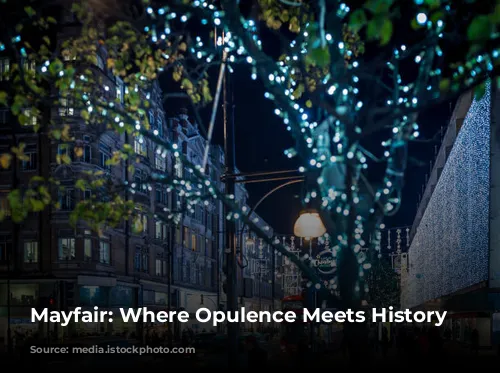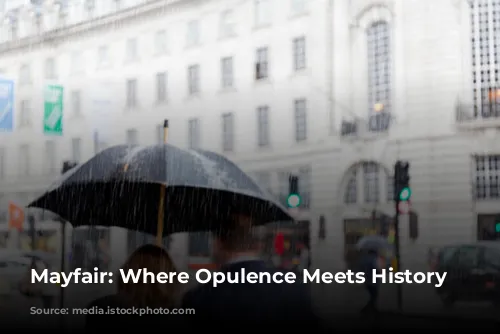Mayfair, a name synonymous with luxury in London, isn’t just a Monopoly board square. This iconic neighborhood is a vibrant tapestry woven with high-end housing, five-star hotels, designer boutiques, and world-class restaurants and bars. But beyond its glitz and glamour, Mayfair boasts a fascinating history and a wealth of cultural treasures waiting to be discovered.
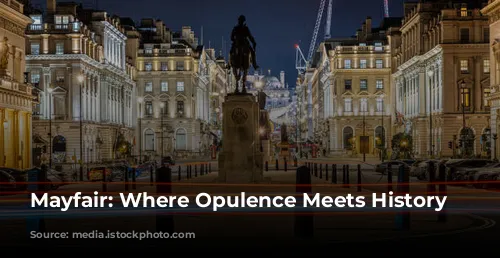
The Heart of British Science: Unveiling the Royal Institution
Nestled on Albermarle Street stands a grand Grade I listed building, the Royal Institution. Founded in 1799 and granted a Royal Charter the following year, this esteemed institution has been a champion of scientific education and research. Under the patronage of HM The Queen, the Royal Institution is renowned for its Christmas Lectures, a series of captivating science presentations that have featured luminaries like Michael Faraday.
The Royal Institution offers a range of science-focused activities and guided tours of its magnificent building. The Faraday Museum, a treasure trove of scientific history, is free to enter and provides an intriguing glimpse into the institution’s pioneering research. A highlight is the Faraday’s magnetic laboratory, preserved as it was in the 1850s, standing in stark contrast to the state-of-the-art nanotechnology lab located nearby.

Grosvenor Square: A Tale of Aristocracy and American History
Dominating the Mayfair estate of the Duke of Westminster is Grosvenor Square, named after Sir Richard Grosvenor, who became the first Duke of Westminster and spearheaded the development of the area around 1721.
Beyond its fashionable allure, Grosvenor Square held a significant place in American history as the former home to the American Embassy. The listed building, still occupying one side of the square, is easily recognizable thanks to the large golden eagle adorning its façade.
The square also features a memorial commemorating the British lives lost in the 9/11 disaster, along with statues of three American presidents: Franklin D. Roosevelt, Eisenhower, and Ronald Reagan.
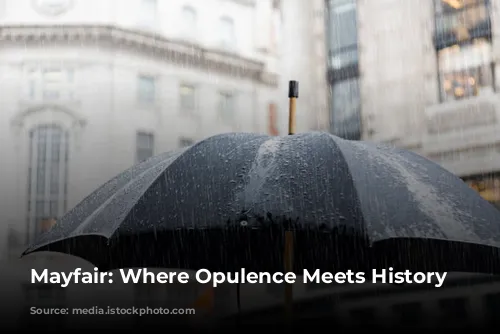
Berkeley Square: Where History and Legend Collide
Berkeley Square, renowned for its beautiful gardens laid out in the 18th century, is steeped in history and whispers of the paranormal. Number 50 Berkeley Square, once the home of former Prime Minister George Canning, is considered London’s most haunted house.
The legend of Mr. Myers, a man jilted at the altar who became a recluse, still lingers within the walls. The house, now an office building, is said to be haunted by the spirit of Mr. Myers, who is believed to wander the upper floors.
Adding to the mystique of Berkeley Square is one of its ancient London plane trees planted in 1789, declared the most valuable street tree in Britain due to its size, health, and historical significance.
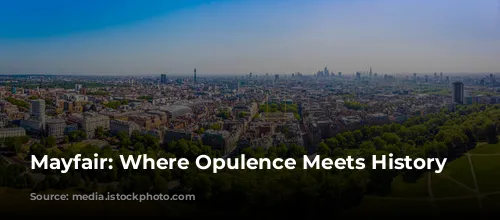
Savile Row: The Birthplace of Bespoke Tailoring
For fashion enthusiasts, a visit to Savile Row is a must. Home to over 40 tailors, Savile Row is the birthplace of the term “bespoke,” signifying a suit meticulously handcrafted.
The area retains its distinctive character thanks to the combined efforts of the Savile Row Bespoke Association, established in 2004, and Pollen Estate, who work collaboratively with the local council to preserve the street’s tailoring heritage.
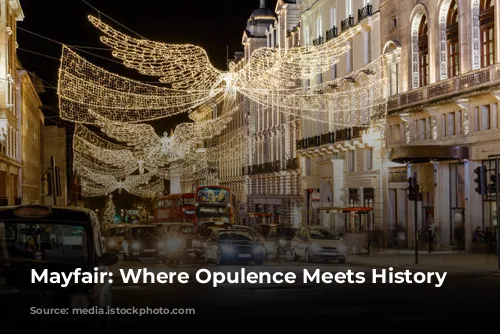
The Burlington Arcade: A Glimpse Into Victorian Elegance
A stroll through The Burlington Arcade transports you to a bygone era. Opened on March 20, 1819, this historic arcade stretches behind Bond Street from Piccadilly to Burlington Gardens, a haven for designer boutiques.
The arcade is still patrolled by Burlington Arcade beadles, dressed in traditional uniforms, complete with top hats and frockcoats, preserving its Victorian charm.
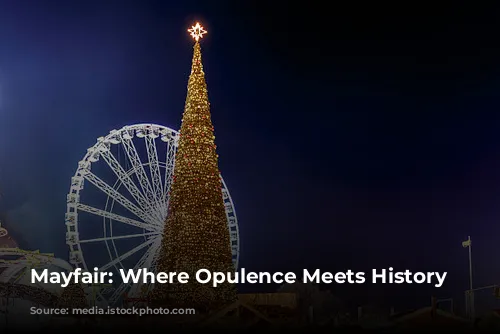
Wigmore Hall: A Haven for Classical Music Lovers
Built between 1899 and 1901 by the renowned German piano manufacturer Bechstein, the Wigmore Hall is a musical gem. Designed by the architect behind the Savoy and the Palace Theatre, Thomas Edward Collcutt, the hall is renowned for its chamber orchestra concerts and its charming Sunday morning concerts where a cup of coffee or sherry is included.
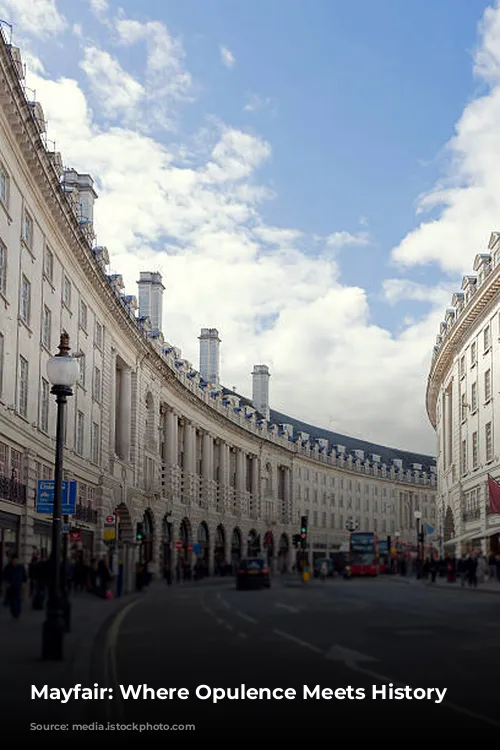
Claridges: A Legacy of Luxury and Glamour
From its humble beginnings as Mivart’s Hotel in 1812, Claridges has evolved into an icon of luxury and elegance. Purchased in 1854 by Mr. and Mrs. Claridge, the hotel was listed as “The First Hotel in London” by Baedekers in 1878.
In 1894, the hotel was acquired by Richard D’Oyly Carte, founder of the rival Savoy Hotel. He demolished the old building and erected the current Claridges, incorporating lifts and en-suite bathrooms, introducing a new level of comfort and sophistication.
Today, Claridges remains a favorite among film stars and musicians, a testament to its timeless allure.
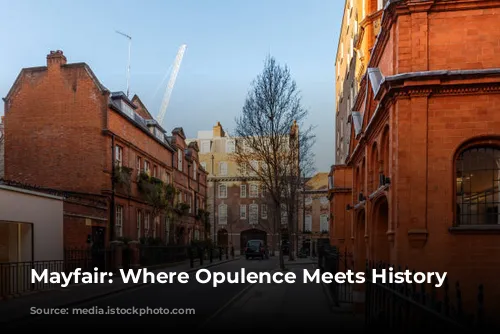
Bond Street: The Epitome of Haute Couture
If Oxford Street is London’s most popular shopping destination, Bond Street is its most exclusive. Home to every major luxury brand, Bond Street boasts the highest concentration of haute couture stores in the world.
Whether you’re indulging in some serious retail therapy or simply window shopping, Bond Street is the place to be.
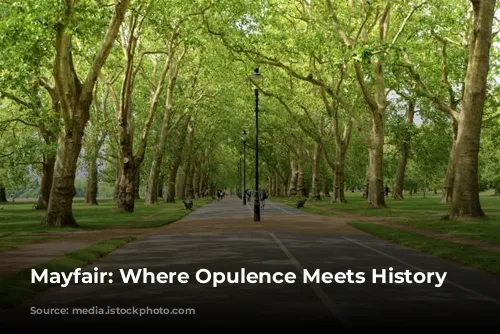
The Royal Academy: A Celebratory Hub for Art and Artists
The Royal Academy, housed in Burlington House, is a cornerstone of London’s art scene. Celebrating its 250th anniversary in 2018, the Academy is largely governed by elected artists known as Royal Academicians, whose works form a significant part of the permanent collection.
The gallery, entirely funded by private donations, relies heavily on its thriving Friends scheme and bequests, ensuring its continued success.

The Dorchester: A Legacy of Grandiose Elegance
The Dorchester, located on Park Lane, stands as a testament to classic elegance. Originally built on the site of Dorchester House, a grand mansion erected in 1853, the hotel opened its doors in 1931.
Renowned for its prestigious status both in the UK and worldwide, the Dorchester retains much of its original grandeur, seamlessly blending classic charm with modern amenities.
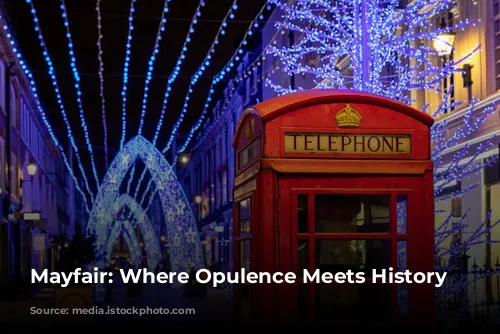
Shepherd Market: A Whimsical Mix of Past and Present
Mayfair, whose name originates from a fifteen-day fair established by James II in the 1680s, finds its heart in Shepherd Market. The 18th-century gentrification of Mayfair brought an end to the festival, prompting Edward Shepherd to redevelop the area.
Completed in the mid-18th century, Shepherd Market originally boasted a duck pond and theatre. It later became a haven for writers and artists in the 1920s. Today, this vibrant market is a charming mix of traditional pubs, eclectic restaurants, and curious shops, reflecting its rich history and enduring appeal.
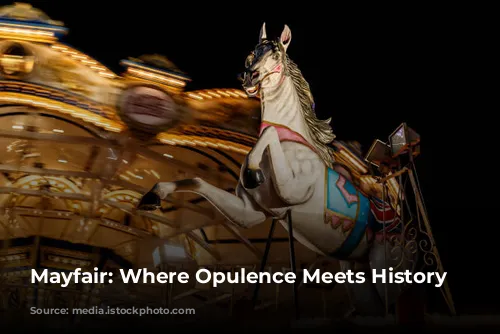
The Gagosian: Where Artistic Power Meets Modernity
Mayfair is renowned for its private art galleries and dealers, with Larry Gagosian at the helm. The world’s most powerful art dealer, Gagosian has two galleries in Mayfair: the Davies Street Gallery and the Grosvenor Hill Gallery.
Gagosian specializes in contemporary and modern art exhibitions, representing some of the most celebrated artists in the world, including Andy Warhol, Jackson Pollock, Damien Hirst, and Pablo Picasso.
Mayfair, with its captivating blend of history, luxury, and cultural treasures, offers a captivating glimpse into the heart of London’s elegance and sophistication. Whether you’re seeking an opulent stay, a dose of art and culture, or a taste of history, Mayfair has something to offer every visitor.
